COLOR LANGUAGE
By Monica Kass Rogers
PHOTOGRAPHY BY BARI WIESELMAN SCHULMAN
hi-fi, state of series, 2022; 18” x 24” acrylic on paper by Bari Wieselman Schulman.
By Monica Kass Rogers
PHOTOGRAPHY BY BARI WIESELMAN SCHULMAN
hi-fi, state of series, 2022; 18” x 24” acrylic on paper by Bari Wieselman Schulman.
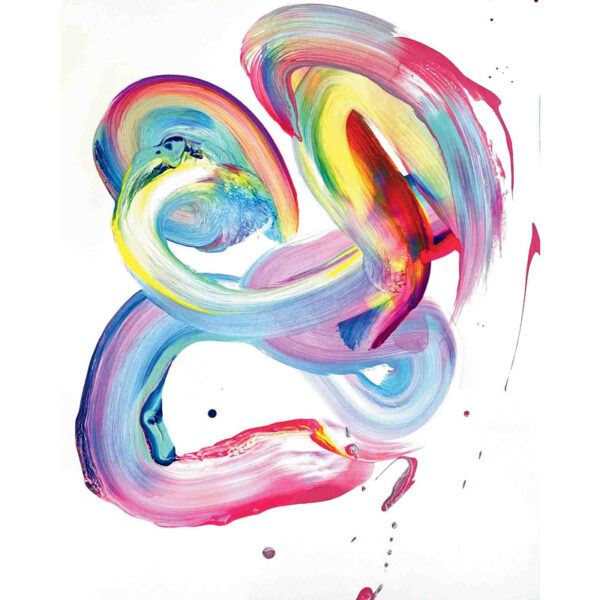
For artist Bari Wieselman Schulman, Ph.D., of rethinkreframe in Deerfield, color is lingua franca: a beautiful bridge language linking humans of every tongue. Speaking with bold colorful strokes, layers, and textures, Schulman’s paintings communicate creative freedom and boundless energy.

“So much is expressed and felt through color,” says Wieselman Schulman. “It is a powerful, meaningful, and transformative medium that is broadly accessible and deeply evocative.”
“I love the moment when people see my work in person for the first time,” she adds. “There is this palpable shockwave that happens, and my hope is that the viewer is swept away on waves of color and light.”

With degrees from the University of Rochester in psychology and Spanish, plus a doctorate in developmental psychology with a focus on psycholinguistics and time living abroad in Madrid, Salamanca, and Antwerp, it’s not a surprise that language plays a hugely influential role in Wieselman Schulman’s world.
“I am always thinking about language and words,” she says. “They fascinate me in every way—their forms, meanings, and sounds; their etymology and heritage; their links to culture, linguistic histories, and family trees.”
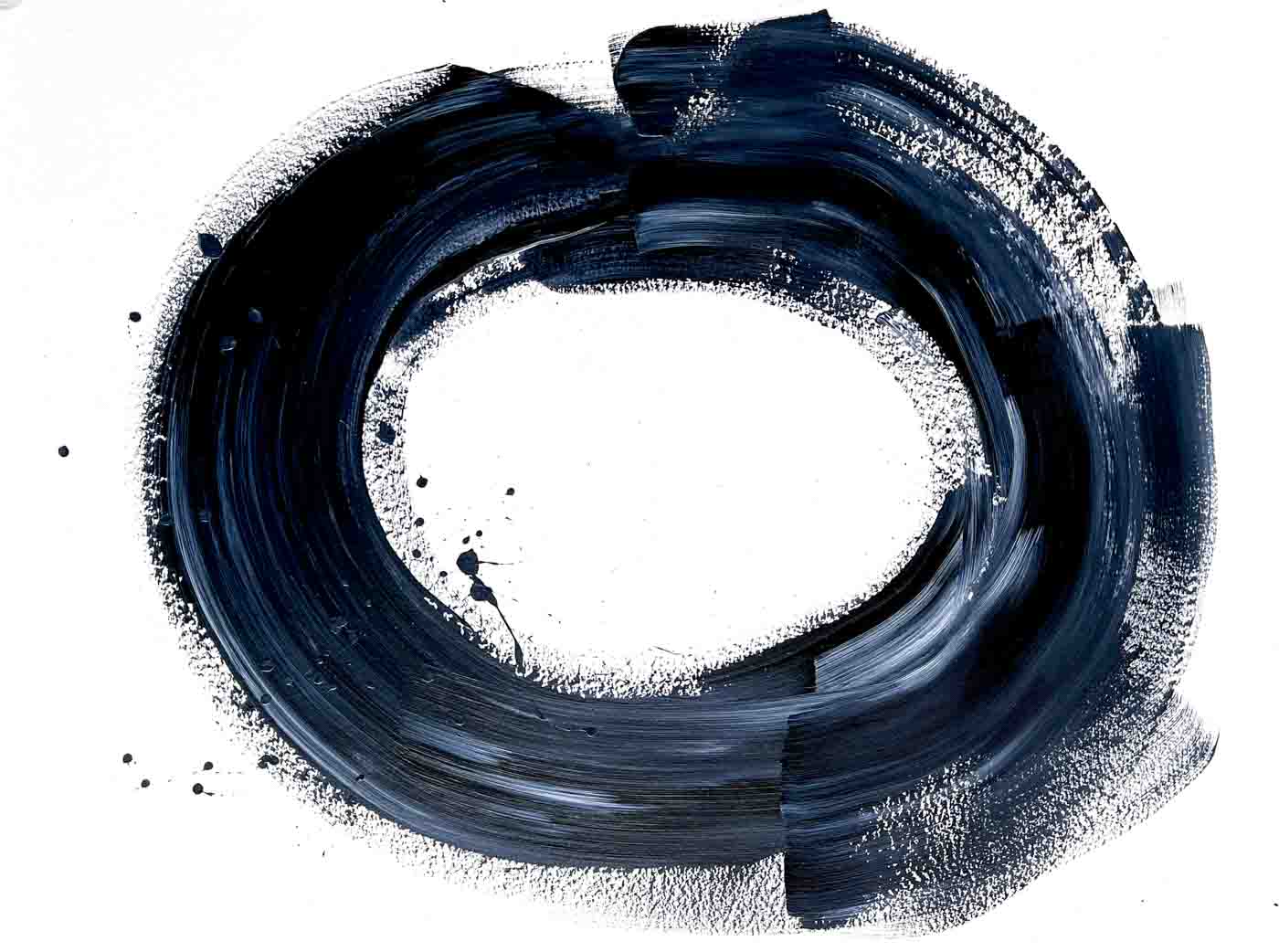
The interwoven connectedness, power, rhythm, and stories delivered through language and individual word forms make this arena one of passion and play for Wieselman Schulman.
Paintings in three recent series, speech + gesture, dialogue, and dialogue 2, used only one or two colors, so the emphasis in these works is on the meaning the viewer derives from the marks and form.

“They are very intuitive, gestural, and movement-centered,” says Wieselman Schulman. “I used color, form, and contrast to ask, to answer, to engage, to evoke, to provoke, and to draw deep. The discourse with each piece is a unique journey for each viewer to co-create and experience.”
For Wieselman Schulman, who has been a knowledge-seeker and “deep and different thinker” her whole life, exploration and experimentation are vital in both her work and her approach to life with her husband, James, and their two children.
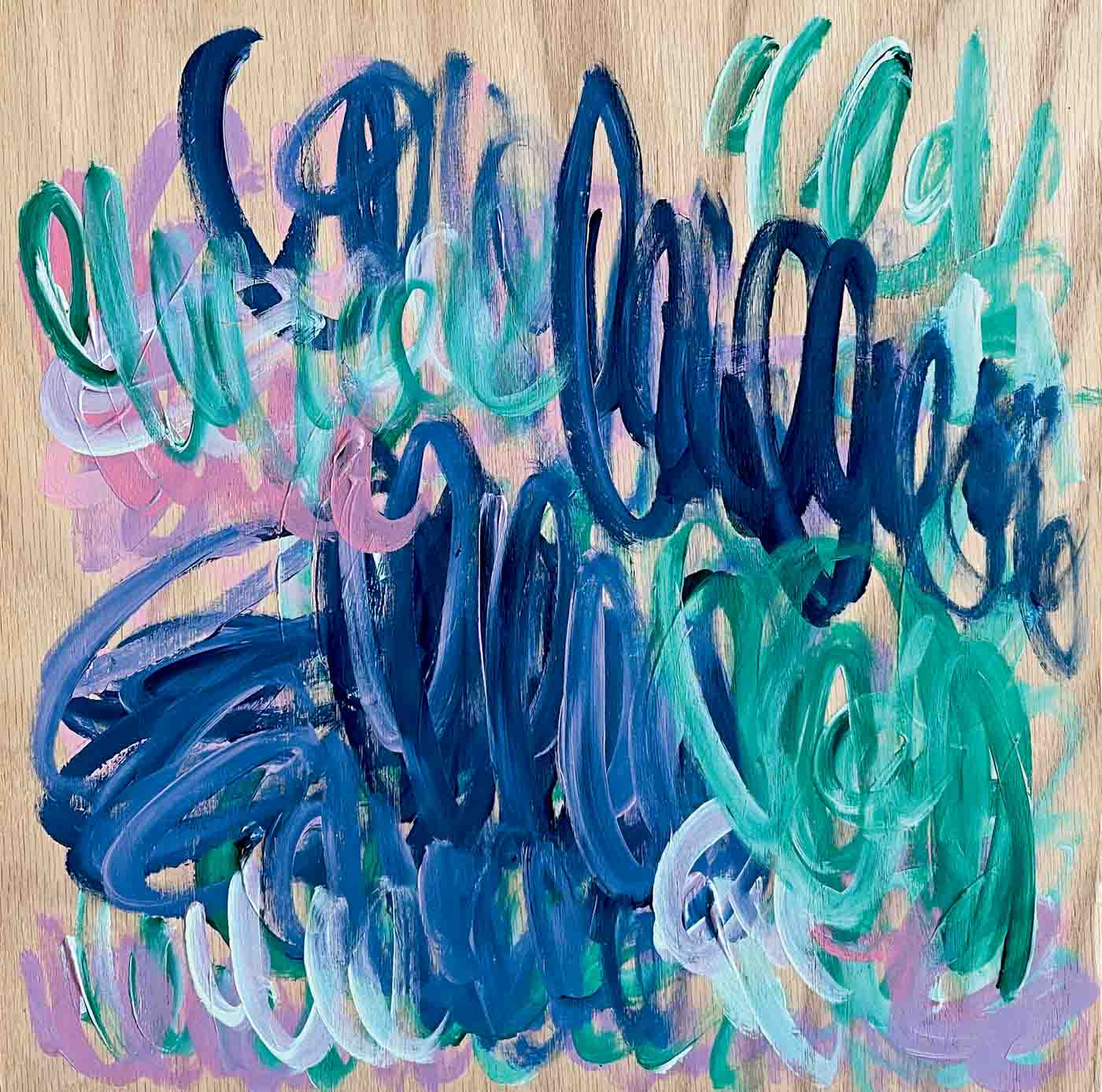
Growing up in Highland Park as the eldest of three with a seven- year gap between siblings, contributed to Wieselman Schulman’s independence, curiosity, and intensity. “I have always liked to puzzle over, poke at, play with, ponder, and peek around every corner,” she reflects.
While many of Schulman’s paintings are on canvas, she also works on wood, paper, textiles, and repurposed materials. Choosing the surface is very much about what feels right to her on an intuitive level at that moment. “Choice of surface essentially emerges in tandem with the work I’m visualizing and the media I plan to use,” she explains. “I gravitate toward thick, slightly toothy watercolor paper, and then at times to raw canvas and cloth/textile. These materials feel good under my hands, energize me, and I like the ways in which my favorite media and tools behave on these surfaces,” she reveals.
Wieselman Schulman also experiments with a wide range of tools beyond brushes and palette knives. In the all is color series, she used pieces of wood in various sizes to move the paint around and applied differing pressures as she painted on canvas and paper.
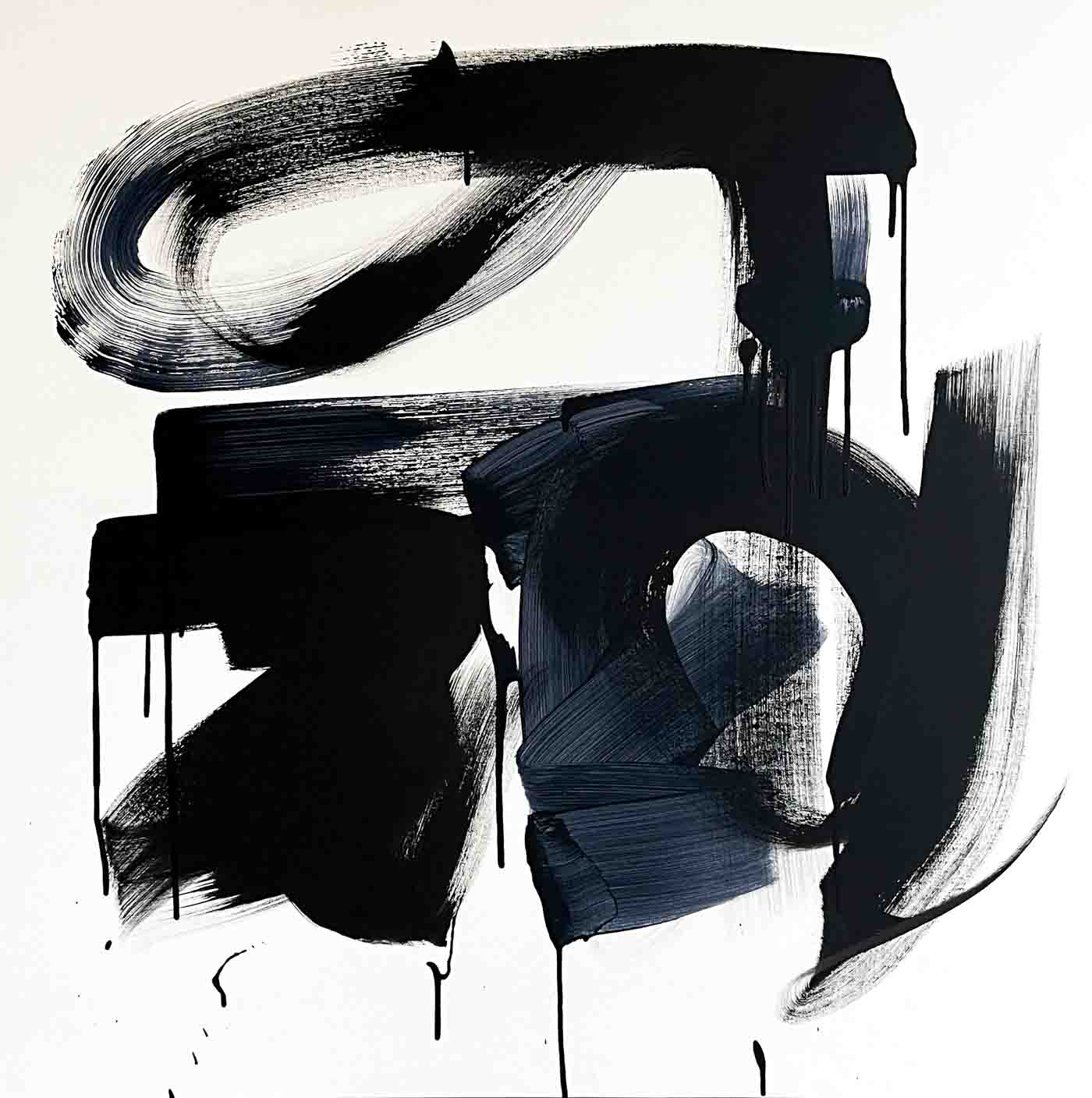
For her state of series—full of bold forms with a lot of color mixtures and movement—Wieselman Schulman spent a lot of time working with the viscosity of the paint to get a very fluid consistency. “Some of my work builds over time: you paint, you leave, you come back and paint again,” she observes. “But for this work, a lot of the building was in my head, then quickly using the brush or scraper in very rapid and assertive movements with a lot of splashing and throwing to get the right energy, movement, and dynamism.”
As seen in her latest paintings, where are all the peonies? and alice into the woods, Wieselman Schulman is currently experimenting with new color juxtapositions and intermingling. These paintings feature a lot of active, smaller movements and represent a fresh space for her.
To connect with her collectors and the public, Wieselman Schulman posts daily on Instagram and maintains a vibrant website. She works with private collectors and designers, participates in gallery shows and artist pop-ups, and collaborates with a wide range of creatives.

The path that led Wieselman Schulman from language and psychology to full-time art included a career in human-centered research and design and running a research team for a digital firm. Her decision to embrace full-time work as an artist with the establishment of her studio was anchored in self-realization.
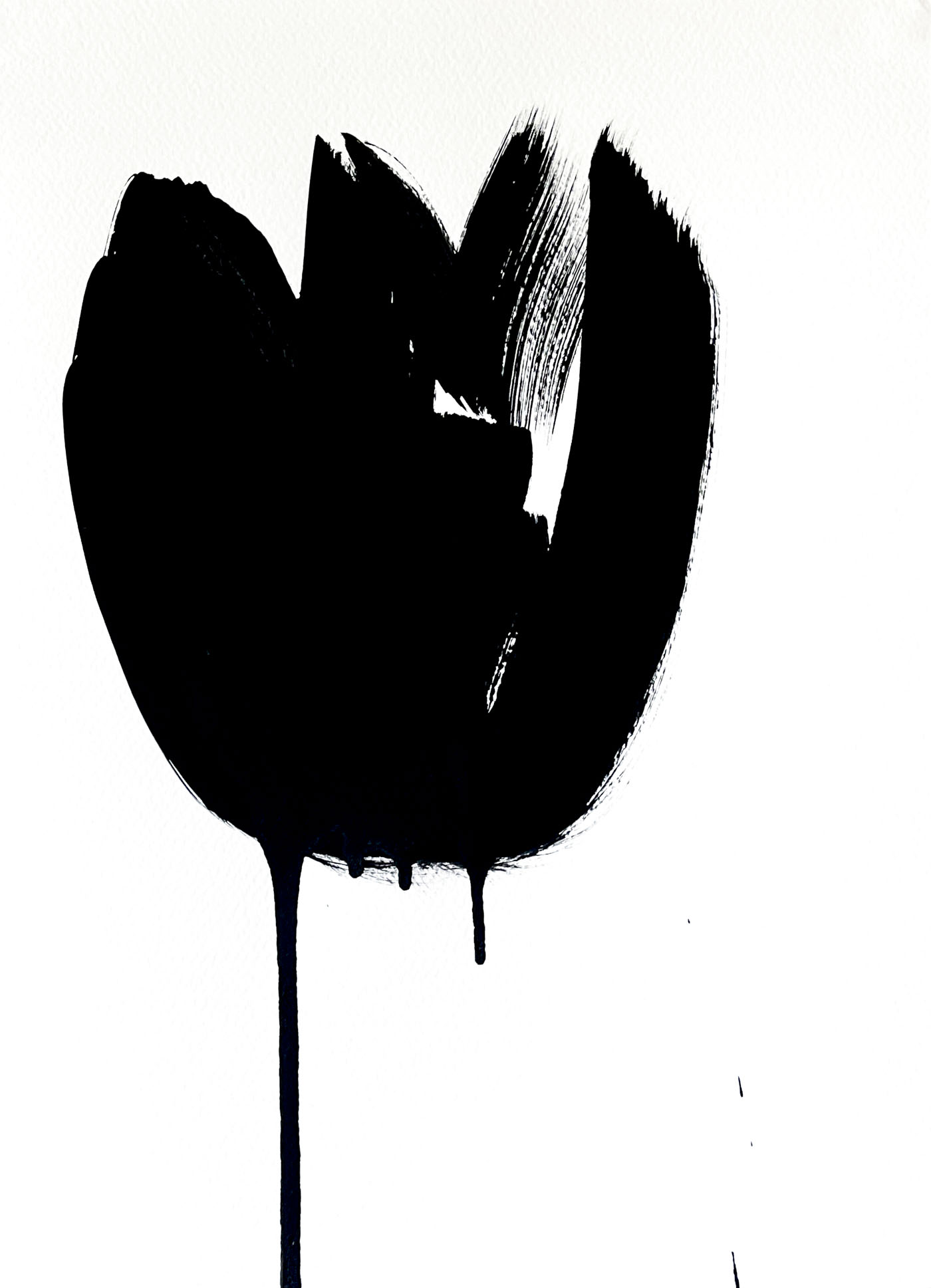
“Being a creative person to my core meant that that creativity would be expressed in many, many ways—all connected to exploration,” she says. “For a long time, I thought having a divergent mind meant I was fragmented. But over time, I shifted my perspective to seeing the ‘who’ and ‘how’ I am as strengths, not vulnerabilities. Formalizing my practice and creating my studio helped me get there; rethinkreframe is both a physical and emotional space from which I can share my work with the world. I love it, and it’s the perfect place to be.”
For more information, visit rethinkreframe.com.
Sign Up for the JWC Media Email